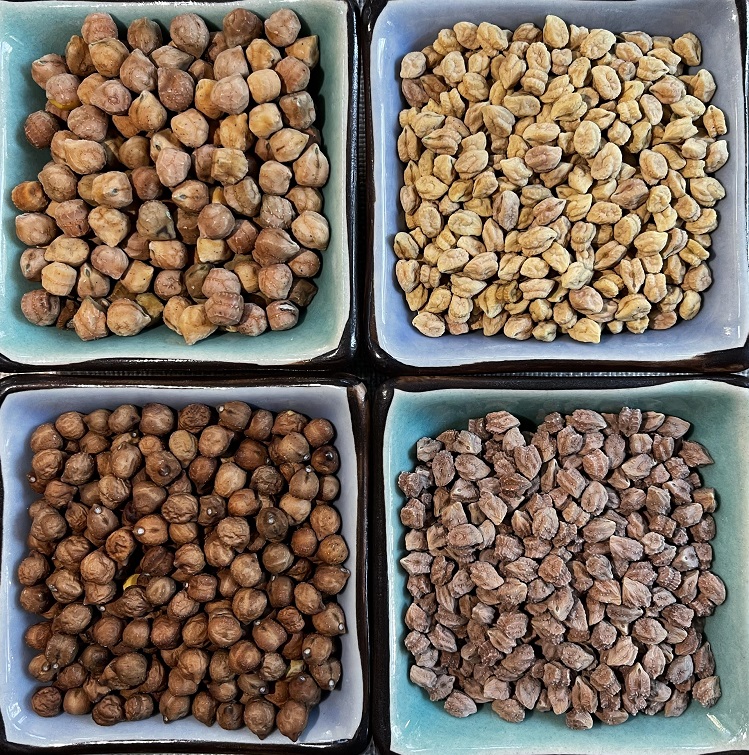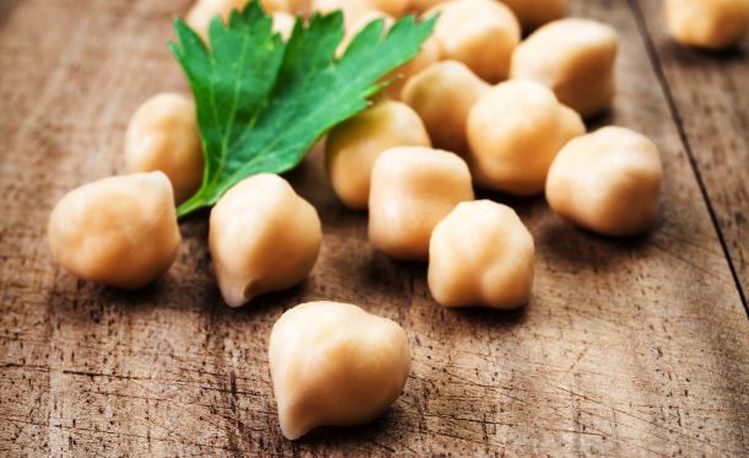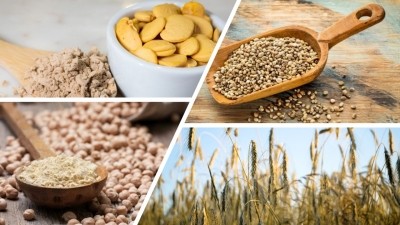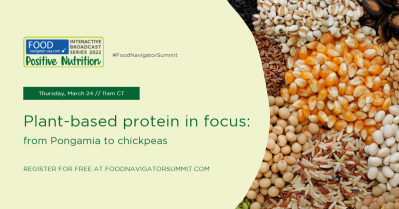New varieties with 75% more protein could catapult chickpea from niche to mainstream player in plant protein arena, says NuCicer
![Kathryn Cook: 'We’re increasing protein [from 20%] to 35% by dry weight, and we think we can drive that even higher in future generations...' Image credit: NuCicer](/var/wrbm_gb_food_pharma/storage/images/_aliases/wrbm_large/publications/food-beverage-nutrition/foodnavigator-usa.com/article/2022/04/06/new-varieties-with-75-more-protein-could-catapult-chickpea-from-niche-to-mainstream-player-in-plant-protein-arena-says-nucicer/15306706-1-eng-GB/New-varieties-with-75-more-protein-could-catapult-chickpea-from-niche-to-mainstream-player-in-plant-protein-arena-says-NuCicer.jpg)
While a lot of attention has been paid to the next generation of plant proteins, from upcycled barley protein to lupin and canola; enabling technologies that change the economics or functionality of these proteins are also beginning to attract attention and investment, says NuCicer, which recently raised $4.5m in a seed round led by Lever VC.
“The cost to produce chickpea protein today is much higher than the cost to produce soy and yellow pea protein because of the lower protein content [chickpeas typically contain around 20% protein, yellow peas around 25%, and soy 30-40%] and as chickpeas are more water efficient they are often grown on less desirable land, so also tend to have slightly lower yields,” NuCicer co-founder and CEO Kathryn Cook told FoodNavigator-USA.
“We're addressing both of those issues head on,” added Cook, a former Boeing engineer who left a high-flying job in AI and machine learning at Facebook to team up with her father, Professor Doug Cook, a world-renowned plant and microbial geneticist at UC Davis, to form NuCicer in late 2019.
“The higher protein content comes from the interaction between the wild and cultivated genomes, so we’re increasing protein from 20% to 35% by dry weight, and we think we can drive that even higher in future generations.
“We're also working to increase yield, and so we'll be able to compete directly with yellow pea from a cost of production standpoint and retain the desirable factors that come with chickpeas.”
‘Some of the traits we're looking at are gelling, solubility, emulsification, foaming, and water and oil holding capacity’
NuCicer is also looking at protein composition, which could mean chickpeas with specific gelling and emulsification properties to replace eggs, say, or viscoelastic properties tailored for extrusion processes and improved flavor for high-protein pastas.
“Some of the traits we're looking at are gelling, solubility, emulsification, foaming, and water and oil holding capacity [important for juiciness in plant-based meat applications],” explained Cook.
Changing the composition of the chickpea could also make life easier for ingredient processors, she said: “Maybe your processing efficiencies are different, you have different processing technologies you can use to do the purification, while the functional nutritional qualities of the resulting protein will also vary.
“If we can target end food and beverage product requirements, at the seed level, you can imagine more efficient supply chains and more all natural minimally processed ingredients, and that is where we see major opportunity beyond just increased protein content,” added Cook, who said longer-term NuCicer will also look at drought tolerance, disease resistance, herbicide resistance and other critical agronomic traits down the line.

Taste, aroma and color
She added: “Beyond just functional properties, taste, aroma and color are also critical to protein ingredients, as one of the things that makes chickpea so desirable is more neutral flavor and colors so you don't need the masking agents you need if you're using a pea or even a soy protein.
“We know there are variations in different attributes across our library that can contribute to flavor, aroma and color, so long term there may be an opportunity to help bring further improved varieties to market with respect to those traits as well.”
But are there trade-offs that come with increased protein content?
“Certainly if you have a limited genetic diversity in your breeding population, it can be a challenge to decouple traits just based on where they exist in the genome and the material you have,” said Cook.
“But in our case, we’re actually not seeing a trade-off, rather we see major opportunities to make improvements across the board.”
She added: “There are a lot of opportunities on the table for chickpeas that haven’t been captured in the past unlike a soy product.”

Genomics guided breeding
So how is NuCicer creating its new Non GMO varieties?
“The physical technique is still through cross pollination,” explained Cook. “But in order to use genomics predictive breeding, you need massive genetic diversity across your library, so you can characterize all of the different material.
“And then using the characterization data and genetic data combined, you can create a predictive machine learning model that says, ‘Okay, we understand that this part of the genome controls this desirable trait, and another part might control a second desirable trait,’ so you use your model to predict which lines you need to crossbreed in order to bring the genetics together into a single progeny… and you may have to do several crosses if you want to bring together multiple traits.”
The business model
Asked about the business model at NuCicer, Cook said: “Rather than just being a seed breeder [whose customers are farmers], our customers really are the food and beverage companies that are going to be using our chickpea ingredients, and we're going to deliver product to them either through partners, licensees, or contract manufacturing.
“So we're working on developing relationships with a number of different parties at the ingredient manufacturing stage of the supply chain.”
Interested in plant-based protein?
Plant-based proteins continue to dominate the so-called ‘alternative protein’ category, but will this still be the case in 10 years’ time? And which emerging plant proteins – from canola, barley and hemp to Pongamia, lupin, and chickpeas – will become the next soy, wheat, and pea?
Find answers in Plant-based protein in focus: From Pongamia to chickepeas, part of FoodNavigator’s global Positive Nutrition virtual series, now available on demand.
Click here to register to watch the event, which aired March 24.



















